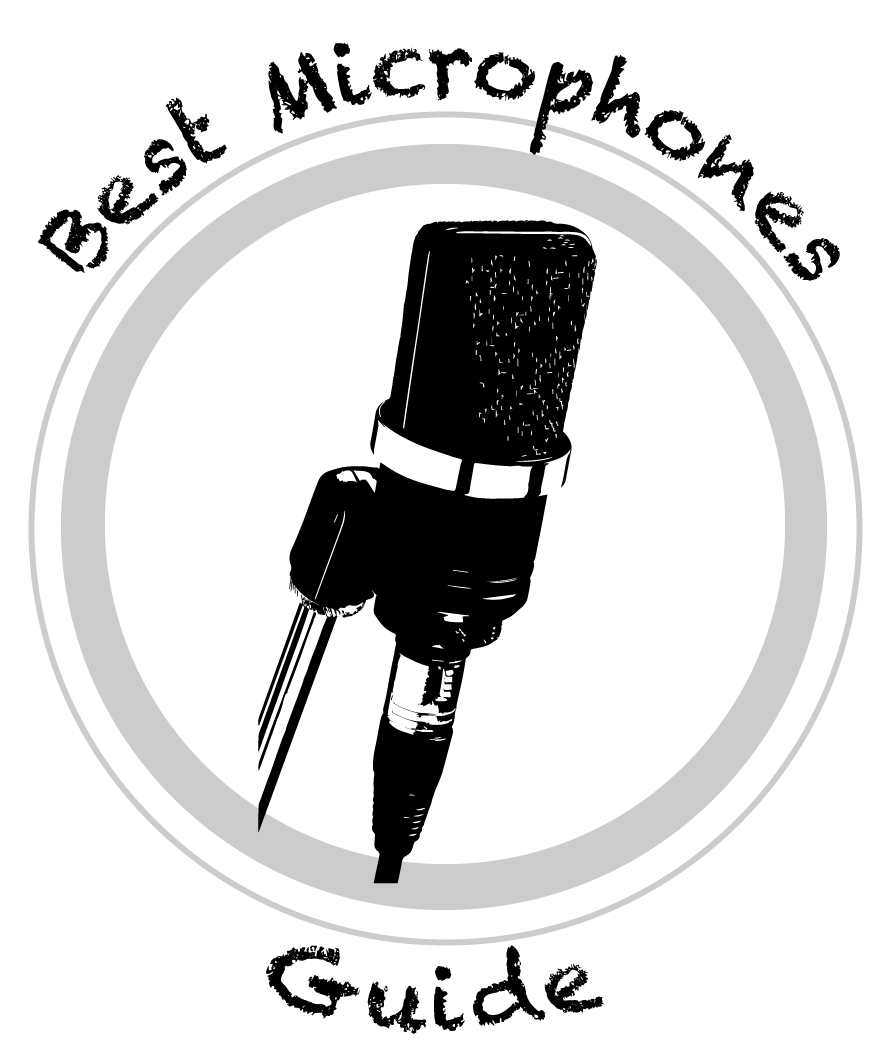Shure SM58 Vocal Microphone Review
The World’s Most Recognizable Microphone and a Terrific Microphone for Vocals

As an Amazon Associate, I earn from qualifying purchases at no additional cost to you.
The legendary Shure SM58 vocal microphone is the world’s most recognizable microphone. Everyone has seen it, probably many times. This Shure SM58 microphone review will first provide a little history and then cover in detail how well this legendary mic does in various uses.

A Brief History of the Shure SM58 Microphone
The Shure SM58 was introduced in 1966, one year after the also legendary Shure SM57. Like the SM57, the SM58 utilized the Unidyne III capsule. Also like the SM57, it was originally designed and intended for use in television studios. However, neither the SM57 nor the SM58 caught on for tv studio use as had been intended. Shure then pitched the mics for live musical performance usage. The microphones caught on with musicians and sound engineers and have been used for live performance and recording ever since.
Notable Features of the Shure SM58
When we are reviewing microphones, we always get to the key features quickly. This Shure SM58 vocal microphone review will be no different, so let’s get started.

The Shure SM58 is a dynamic microphone with a cardioid polar pattern. It has a frequency response of 50Hz to 15,000kHz.
The Shure SM58’s ball shaped grille, which is its primary difference vs. the SM57, is lined on the inside with a thin layer of foam. This foam functions as a built-in pop filter to reduce plosives and also works as a wind filter.
Includes Shure’s famous pneumatic shock mount system (first introduced in 1964) which reduces unwanted handling noise.

The base model of the microphone does not come with an on-off switch. This base model is called the SM58-LC. You can also purchase a version called the SM58S, which does have an on-off switch. It is very minimally more expensive than the SM58-LC.
The Shure SM58 has legendary build quality and toughness. The SM58 is probably the gold standard for tough and durable microphones. It includes metal construction for the body and a steel mesh grille. All sorts of tests have been done involving various things being done to the mic to test out its toughness.
Check out this quick 2 minute video created by Musician’s Friend highlighting the mic’s amazing durability in the face of water, fire, and being run over by a truck:
The Shure SM58 Excels at Live Vocal Performance
As alluded to earlier in this Shure SM58 review, the mic has a very sturdy and rugged design. Its ruggedness is pretty much as good as it gets, and this makes it well suited to the demands of live performance. Hold one in your hand and you will be able to tell how solid and well-built the microphone is. Its durability and toughness is a huge plus on the road and in live performances.
The SM58 also handles very high sound pressure levels (SPL) without the sound becoming distorted, which is also important for live performance. The max SPL for the Shure SM58 dynamic mic is 180 decibels.
The built-in pop filter is another very valuable feature for performing live when you would not want to use a regular pop filter as it would not look very visually appealing on stage.
As a cardioid dynamic microphone, the Shure SM58 also minimizes picking up unwanted on stage sound sources and limits feedback.
All in all, there are a lot of reasons why the SM58 is the microphone you will see more on stage vocalists using than any other. It is highly recommended for vocal live performance.
The Shure SM58 is Excellent for Recording Vocals
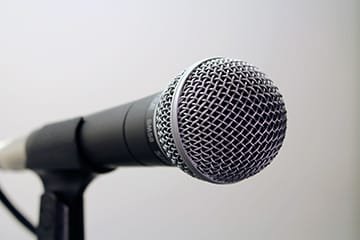
For this Shure SM58 review, we tested the SM58 comprehensively to see how it performed recording vocals, and the SM58 sounded quite good, capturing very nice and pleasant sounding vocals.
The SM58 mic brings out a bit more of the high end that cuts through the mix, for good or for bad (depending on the song and your personal preferences). The high end can definitely be a little punchy in spots. The detail it recorded was pretty good though not as good as you would get with a condenser microphone.
While we originally used the SM58 for years to record vocals without a Cloudlifter or another mic activator (such as the FetHead), this is a microphone that does benefit from the mic activator. If you buy the SM58 and use it in conjunction with a mic activator, you may never feel the need to upgrade your mic. The Shure SM58 microphone sounds especially good for recorded vocals when put through a mic activator.

Recording Instruments with the Shure SM58
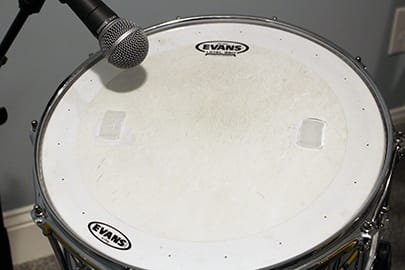
You will find that some other Shure SM58 reviews only focus on using it for vocals. While the SM58 is primarily used as a vocal mic, in this Shure SM58 review, we want to cover the SM58’s ability to record other instruments as well. The Shure SM58 definitely does a solid job of recording some other instruments.
It’s probably not going to win a contest against instrument microphones, but if you heard an instrument recording done with one, you probably would not notice anything unusual. It does a solid and suitable job.
We have tested the Shure SM58’s ability to record electric guitars, acoustic guitars, snare drums, and tom drums, and while it is not one of our top rated microphones for any of those, it does a surprisingly good job on all of them.
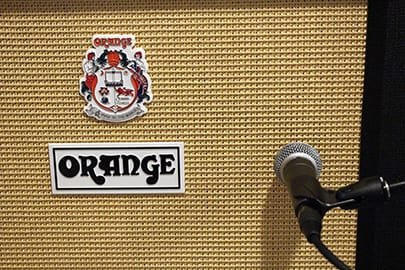
Probably so much so that if you are only able to buy one microphone and are deciding between the Shure SM57 and the Shure SM58, and want to use it to record both vocals and instruments, it may come down to how much you value the vocals vs the instruments because either mic can do both. The SM58 is better for the vocals and the SM57 is better for the instruments.
If you wanted to improve the SM58’s performance even further in recording instruments, you could remove its grille. Removing the grille makes it more similar to the SM57 and also removes the built in pop filter that is not necessary for instruments.
All in all, between its vocal prowess and ability to record instruments, the SM58 would be a great addition to any home studio.
The Shure SM58 is a Very Good Mic for Podcasting
In this Shure SM58 review we want to cover a lesser known use for the mic: podcasting.
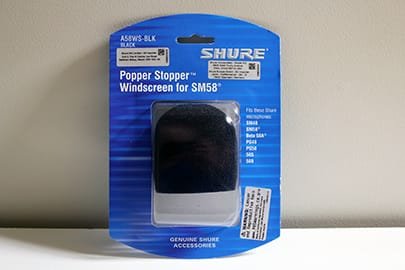
When you think of microphones to use for podcasting, you probably do not immediately think of the Shure SM58. However, the SM58 can be a great (and underrated) choice to use for your podcast!
Probably the most commonly seen microphone on YouTube for podcasts is the Shure SM7B. Did you know, however, that the SM58 and the SM7B are not as different as you might first think? And the SM58 is considerably more affordable than the somewhat pricey SM7B.
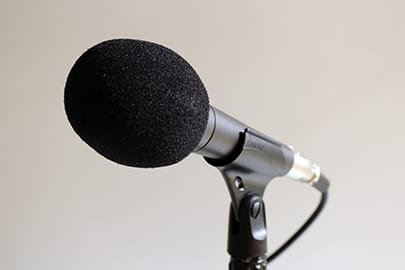
The two microphones both utilize the same sound capsule, the Unidyne III. The SM7B comes with a foam windscreen, while the SM58 does not. The SM58 does have some foam built in under its grille which functions as something of a mini pop filter. The SM58 is more susceptible to plosives (p sounds) than the SM7B. For this reason, if you want to use the SM58 for a podcast, we would recommend that you get the foam windscreen Shure makes for the SM58 (* Amazon link – commissions earned) which will really help cut down on the plosives.
Outside of this, the Shure SM7B does include a low cut filter and a presence boost. Those are nice options that are not available on the SM58. However, the SM7B is about 4x the price. Is it 4x better to use for a podcast? Probably not. The sound you can get for podcasting from the Shure SM58 with windscreen is probably within 90-95% of the SM7B. So especially if you are managing costs or may need to have microphones for guests on your podcast as well, the Shure SM58 does a very nice job and is worth considering.
Added note: Check out our Shure SM7B review
The Shure SM58 Provides Excellent Value and Affordability
No Shure SM58 review would be complete without mentioning its impressive price point vs. the quality it provides, especially in relation to other microphones.
Until recently, the SM58 microphone had been pretty much sold for about the same price it had been sold for during the past few decades (around $99). However, in 2025 some Shure microphones including the SM58 had a modest price increase. The price increased about 10% and is now usually hovering around $109.
Even with the price increase, that price point is extremely good vs. many other top vocal microphones.
While the increase was unfortunate, for a good quality microphone that has versatility for both live and recording purposes, the Shure SM58 is still priced at a very reasonable and affordable price point.
View Shure SM58 Price and Reviews on AmazonAlternatives to the Shure SM58
For this Shure SM58 mic review, we also want to take a look at some possible alternatives to consider. As the SM58 is used so frequently as a live performance microphone, we will focus on dynamic microphones that can be used for the same purpose in addition to being able to excel at studio recording.
Note that you could certainly consider many large diaphragm condenser microphones if your main focus is recording. Most of those are, generally speaking, more expensive by a substantial amount.
Sennheiser e835
The Sennheiser e835 vocal microphone is probably the option that clocks in at the most similar price. After the 2025 Shure price increase, the e835 is actually slightly less expensive at around $100. Like the SM58, it is a dynamic cardioid microphone. Sennheiser markets it primarily for stage use and also promotes it for recording in home studios and “semi-pro studios.”
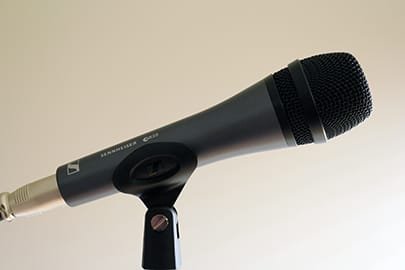
The e835 can handle high SPLs, is quite sturdy and rugged, and has an attractive, sleek appearance. The Sennheiser e835 has a frequency response of 40Hz to 16,000kHz. We are big fans of Sennheiser mics and we think this is a good mic, but in this case, with the price point being so similar, we would likely be inclined to choose the SM58 between the 2. We think it’s a better mic, especially for recording.
Check Sennheiser e835 Price and Reviews on Amazon
Shure Beta 58a
A more expensive option that we like a little better than the SM58 is the Shure Beta 58a, which can be thought of as an improved SM58. When we say it’s more expensive, we mean, depending on your budget, substantially more expensive. The Shure Beta 58a sells for around $189, so $80 more than the SM58. Note that you can get it at a pretty good sale price from time to time.
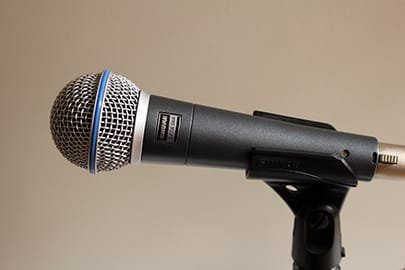
The Shure Beta 58a looks almost identical to the SM58 and has the same durable and rugged build quality as well as the ball shaped grille. The main visual difference on the Beta 58a is there is a light blue stripe that circles the grille.
Like the SM58, the Shure Beta 58a is a dynamic vocal microphone. However, unlike the 58, it has a supercardioid polar pattern rather than a cardioid polar pattern. The frequency response range is expanded on the high end, with the overall range being 50Hz to 16,000kHz. Shure describes the adjustment as “frequency response tailored for vocals, with brightened midrange and bass rolloff to control proximity effect.”
In general, we prefer the Beta 58a which tends to sound a little brighter and crisper. But that $80 price difference is substantial. Is the Beta 58a mic $80 better than the SM58? That probably depends on what you are trying to do and may be different for differing voices.
If you are serious about recording vocals and can afford the additional money, then it’s something worth considering, but again it’s hard to put a price tag on how much better it is. If you are mainly looking at the 58 for live use and light recording, then it may be worthwhile to just go with the 58. The Shure SM58 is already a great mic in its own right.
Check Shure Beta 58a Price and Reviews on Amazon

